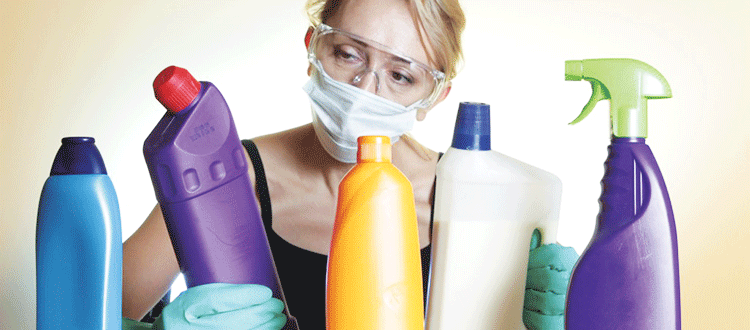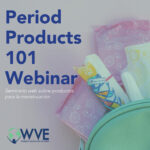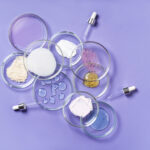If SC Johnson Want Our Trust, They’ll Stop Hiding Ingredients
 |
|
Cassidy Randall Director of Outreach |
This blog originally appeared on GreenBiz.com
It’s time that we get specific about the word “fragrance.” Ingredients in a product’s “fragrance” can be made up of 100 different chemicals, and these specific chemicals aren’t disclosed to consumers because they’re currently protected as trade secrets.
But the issue of fragrance disclosure—or lack thereof—has come under increasing public scrutiny in the last few years by sophisticated consumers concerned about the chemicals they are exposed to from household products. While several alternative and “green companies” have begun listing the ingredients in their fragrances in response to this demand, there remains a lack of leadership from mainstream cleaning companies in this arena.
The importance of fragrance ingredient information to consumers should not be underestimated. Women’s Voices for the Earth’s 2013 scientific literature review reported that millions of Americans are affected by skin allergies linked to undisclosed components in fragrance. Women are much more likely to be affected than men, and rates among children have skyrocketed in recent decades. Serious health problems linked to fragrance range from neurological symptoms and immune system effects to breathing problems and more. One U.K. study of 14,000 pregnant women showed a link between the use of air fresheners and aerosol sprays and an increase in headaches and depression in the mothers, as well as ear infections and diarrhea in their babies. Common ingredients in fragrance include hormone disruptors like phthalates (linked to a series of reproductive abnormalities in baby boys), and synthetic musks (persistent, bioaccumulative, and showing up in blood and breast milk).
Consumers are increasingly asserting that they have the right to know what’s in the products they’re using to clean their homes. In fact, last year an-industry-sponsored study, “Thinking Consumption: Consumers and the Future of Sustainability,” found that consumers ranked ingredient transparency among the most important issues for brands:
Nearly 9 in 10 consumers globally (86 percent) say “ingredient transparency is extremely important or very important” for companies to address as part of their products, services, or operations, including 88 percent of consumers in emerging markets and 84 percent of consumers in developed markets.
In response to this demand for transparency, smaller companies have already begun disclosing all ingredients in cleaning products right down to the fragrance, including Seventh Generation, The Honest Company, Ecostore, Cleanwell, and several others. These companies have paved the way, demonstrating that meaningful fragrance disclosure can be achieved without giving away crucial secrets and without incurring any negative financial consequences; on the contrary, these companies have shown growth in recent years as consumers look for brands they can trust.
Unfortunately, the cleaning product industry as a whole seems unwilling to break this outdated norm of fragrance secrecy. At the American Cleaning Institute’s (the trade association representing cleaning product manufacturers) annual meeting in January 2014, ingredient disclosure and safety topics were conspicuously absent from the agenda. In addition, ACI’s new Hazard Data Portal, which intends to be a “comprehensive inventory” of public safety information on ingredients used by ACI’s 900 members, includes almost no information on the thousands of fragrance chemicals used by the mainstream companies because the identities of those chemicals are kept secret.
Fragrance has historically been protected as an art form, as that component of a product that differentiates it from all the others out there. And no doubt that there is an art to fragrance, particularly in the techniques in the refining of ingredients, and the ways and amounts in which they are combined. Those may well be valuable fragrance secrets worth keeping. But a simple list of ingredients, which customers are increasingly asking for, doesn’t appear to be giving anything away of that art form. As the issue of toxic chemicals and impacts to human health continues to occupy the spotlight, and more and more small companies reveal all the ingredients in their products, companies who don’t disclose fragrance ingredients are beginning to look like they have something to hide.
Those mainstream companies who don’t have anything to hide should take the opportunity to lead in the fragrance disclosure arena and gain back consumer trust.
One company that comes to mind is SC Johnson & Son (Glade, Windex, Pledge). In past years, SC Johnson has championed consumer health and safety by disclosing and removing harmful chemicals from its cleaning products.
Surpassing industry standards is nothing new to SC Johnson. In 2009, it became the first major company to announce that it would begin disclosing via its website all ingredients in its cleaning products, except fragrance, which was unprecedented in the industry at that time. As part of the same 2009 announcement, SC Johnson committed to remove phthalates from all products, creating a domino effect that had other major companies scrambling to follow suit. In fact, just a few months ago, Procter & Gamble gave up its position as the lone major cleaning product company still using phthalates, and announced it too would remove the hormone disruptors this year.
The company was also among the first, along with Clorox, to acknowledge that consumers do want more fragrance information. In 2012, SC Johnson released their fragrance palette, a master list of the 1,500 chemicals used in its fragrance mixtures, but not specific to products. Without product-specific information, the list isn’t useful to consumers. However, this gesture became the new status quo, moving several other leading companies to follow this trend as well.
Recently, SC Johnson leadership on consumer safety and transparency has been eclipsed by both Simple Green and Reckitt Benckiser (makers of Lysol and AirWick), who last year began disclosing certain fragrance allergens in their products. Companies, including SC Johnson, already list these allergens in products in the E.U., making this a logical (if long overdue) first step toward product-specific fragrance disclosure.
Given that this first step in allergen disclosure has already been taken, it’s only a matter of time before full fragrance disclosure becomes the norm. Consumers are looking for a major brand that they can trust that will go the whole nine yards, and companies should be elbowing each other out of the way to seize the opportunity to be that brand.






